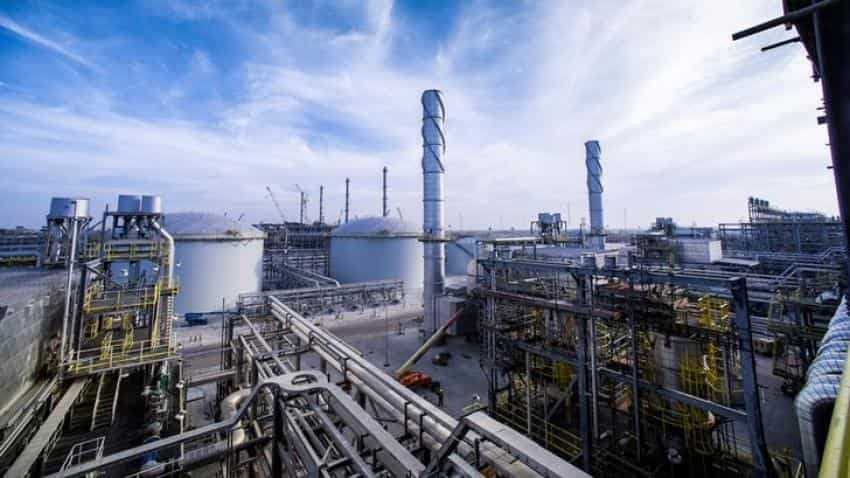Oil stable on weak dollar, economic growth, but pockets of oversupply linger
The Saudi energy ministry said on Wednesday that Saudi Aramco`s crude output in March will be 100,000 barrels per day (bpd) below its February level while exports would be kept below 7 million bpd.

Oil prices were stable on Wednesday, supported by a statement that Saudi crude output would drop in March, healthy economic growth and on a weakening U.S. dollar.
Despite this, oil prices remain well below recent highs due to signs of lingering oversupply, including rising U.S. inventories and ample physical flows globally.
U.S. West Texas Intermediate crude futures were at $59.19 a barrel at 0636 GMT, flat from their last settlement. WTI was trading above $65 in early February.
Brent crude futures were at $62.81 per barrel, up 9 cents from their last close. Brent was above $70 a barrel earlier this month.
The Saudi energy ministry said on Wednesday that Saudi Aramco`s crude output in March will be 100,000 barrels per day (bpd) below its February level while exports would be kept below 7 million bpd.
Ongoing weakness in the U.S. dollar as well as economic growth were also supporting oil markets, traders said.
Despite this, some analysts warned that not all indicators were bullish.
"While we continue to see a firming fundamental backdrop over the course of this year...investors should not discount the caution signs that have been emerging," investment bank RBC Capital Markets said in a note to clients.
"Pockets of oversupply have been emerging in the physical market," the Canadian bank said. "The tempering physical oil backdrop is ... playing a central role in the recent price softness," it said.
The American Petroleum Institute said on Tuesday that U.S. crude inventories rose by 3.9 million barrels in the week to Feb. 9, to 422.4 million.
That was largely due to soaring U.S. crude production, which has jumped by over 20 percent since mid-2016 to more than 10 million bpd, surpassing that of top exporter Saudi Arabia and coming within reach of Russia, the world`s biggest producer.
U.S. crude is also increasingly appearing on global markets, and more is set to come as the Louisiana Offshore Oil Port starts testing supertankers for exports.
The surge in U.S. supplies means oil may be in oversupply again soon, flipping the 2017 deficit induced by supply restraint led by the Organization of the Petroleum Exporting Countries (OPEC) and Russia.
The International Energy Agency said expects oil demand to grow by 1.4 million bpd in 2018, but adding that output growth could outpace demand.
Citi said it expected 2018 oil markets to be balanced or in slight oversupply, forecasting a "market surplus of 0 to 0.2 million bpd."
OPEC and the IEA "are vastly underestimating the magnitude and sustainability of non-OPEC oil supply growth," Citi said.
Markets are already reacting, with physical prices for crudes from the North Sea, Russia, the United States, and Middle East becoming cheaper.
Despite the warning lights from within oil markets, economic fundamentals remain healthy.
Japan on Wednesday reported an 8th straight quarter of growth, its longest continuous expansion since the 1980s bubble economy, Cabinet Office data showed.
Get Latest Business News, Stock Market Updates and Videos; Check your tax outgo through Income Tax Calculator and save money through our Personal Finance coverage. Check Business Breaking News Live on Zee Business Twitter and Facebook. Subscribe on YouTube.
RECOMMENDED STORIES

Top 10 multi cap mutual funds with highest SIP returns in 1 year calculator sbi lic hsbc canara axis union invesco Know how Rs 13333 monthly investment in each scheme has grown nifty bse

SBI Latest FD Rates: This is what you can get on Rs 10 lakh investment in 1-year, 3-year, and 5-year tenures

Reduce Home Loan EMI vs Reduce Tenure: Which prepayment option can help save Rs 55 lakh, & 7 years and 9 months on Rs 80 lakh, 30-year loan

SBI 444-day FD vs Bank of Baroda 400-day FD: What will be maturity amounts on Rs 6 lakh and Rs 10 lakh investments for general and senior citizens?
12:17 PM IST











 Asia market news: Stocks inch higher as China rebounds, dollar firm
Asia market news: Stocks inch higher as China rebounds, dollar firm Major Gulf markets mixed on muted oil prices, regional tensions
Major Gulf markets mixed on muted oil prices, regional tensions Oil prices stabilise as Red Sea transport disruptions ease
Oil prices stabilise as Red Sea transport disruptions ease Oil prices extend gains as Red Sea attacks disrupt supply chains
Oil prices extend gains as Red Sea attacks disrupt supply chains Market soars to new heights as Federal Reserve signals shift: Sensex and Nifty surges amid global economic optimism
Market soars to new heights as Federal Reserve signals shift: Sensex and Nifty surges amid global economic optimism